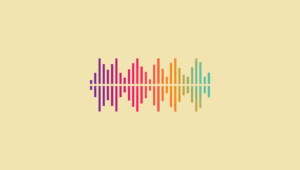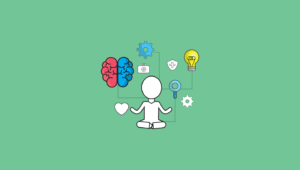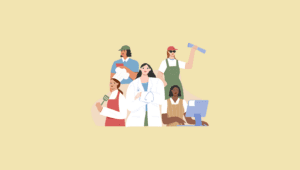Your biological clock never stops ticking and as it does, your body changes. As you age, particularly after the age of 30, you may begin to notice subtle differences in your body. By the age of 40, even if you are healthy and in shape, you may find that not have the energy or the range of mobility that you had when you were younger. Although you can’t stop the movement of time, staying active as you age is important for your physical and mental health and can help to slow down the aging process.
Aging in shape means continuing to exercise regularly even as you move into your senior years. You may think that this sounds too challenging, particularly if you are in your 60s or 70s, but it’s really not, thanks to low intensity workouts. Low impact or low intensity exercise allow you to stay fit without putting a strain on your body as you age. This article will explain how your body changes as you age, what low intensity workouts are, and examples of low-impact exercises that you can start today to improve your physical and mental well-being.
How Your Body Changes as You Age

It’s natural and inevitable that your body changes as you age. Although some of these changes cannot be avoided, depending on your lifestyle choices, you may be able to slow some of them down. The main constituents of your body are organs, muscles, bones, water, and fat all of which change over time. Here are some of the changes you can expect as you age.
- Lean tissue: After the age of 30, you may begin to lose some lean tissue in your muscles, kidneys, and other organs. This process is known as muscle atrophy. Your bones may also lose some of their density due to mineral loss. This process is known as osteopenia, and may, in its later stages, develop into osteoporosis.
- Body fat: After the age of 30, your body fat will begin to increase. Fatty tissue tends to build up around the center of the body whereas the layer of fat under your skin gets thinner. As you reach your senior years, you may have almost 30% more fat than when you were younger.
- Height: Whether you are a man or a woman, due to the discs in your vertebrae compressing, you are likely to lose around a half-inch of your height every decade after the age of 40. This speeds up slightly after the age of 70.
Why Exercise is Important as You Age

Everyone knows that exercise is good for them, but some people find it difficult to make the time for physical activity. But it is important to fit exercise into your daily routine, no matter how busy you are, because it improves your quality of life and may help you live longer. This is because regular exercise not only keeps you in good shape but also reduces your risk of disease. Not to mention the fact that it’s also great for your mental and emotional health.
The good news is, according to the World Health Organization, to benefit from exercise you only need to spend a minimum of 20-30 minutes each day on a moderate to vigorous activity such as walking or swimming. Here are some of the benefits you will enjoy:
- Improved mental and emotional health: There are numerous mental health benefits of exercise. Physical activity produces endorphins. These are hormones that make you feel good and relieve stress. Exercise also reduces insomnia and aids restful sleep.
- Disease prevention: Regular physical exercise, even if it’s low intensity workouts, can significantly reduce your risk of diseases such as heart attack and stroke, diabetes, and certain types of cancer.
- Improved cognitive functions: You may not realize it, but physical exercise has benefits for your brain. It can help with overall brain functions as well as reduce the risk of dementia and Alzheimer’s disease.
- Reducing fall risk: As you approach your senior years, you are at an increased risk of falls, this can not only affect your independence, but it can also put you at risk of fractures bones. Regular exercise improves your balance. It also increases your strength and improves your flexibility.
- Social involvement: Joining a community exercise group, gym, or exercising with friends turns exercise into a fun social event. It is important as you grow older, to maintain a sense of purpose so that you don’t feel isolated. This will help to reduce your risk of depression.
What are Low Intensity Workouts?
When it comes to exercise, there are three levels of intensity: high, moderate, and low. The level of intensity is measured by how difficult the activity feels to you as you are doing it. For example, if an exercise causes you to sweat, and makes you breathless, this is a high-intensity workout. If the activity does not cause changes in your breathing pattern and does not cause sweating, and you can carry on a conversation while you are doing it, this is considered to be a low intensity workout.
Types of Low Intensity Exercise
Don’t be fooled into thinking that low intensity workouts do not benefit your health. They do in many ways, as we have seen above. Here’s a rundown on some low intensity exercises and how you can benefit from them as you age.
Walk Where you Will Wander

Walking is possibly the most underrated form of exercise. When you walk around, you are bearing the full weight of your body. A daily walk, even for just twenty minutes, at a steady pace can have the following benefits:
- Improved heart and lung health
- Lowered risk of cardiovascular disease and stroke
- Improved blood pressure level
- Better pain management
- Reduced stiffness in joints and muscles
- Reduced body fat
Yoga For Your Inner Peace

Yoga is an excellent way for older adults to loosen up and flex tight and aching muscles. It’s a gentle, low-impact exercise that can be practiced throughout your life. It is even suitable for people who have reduced mobility or joint pain. Yoga is comprised of a combination of deep breathing exercises, gentle stretches, and poses. Many of the poses and breathing exercises can be done sitting or lying down. It has the following health benefits:
- Lowering stress
- Aiding restful sleep
- Improving mood
- Reducing the risk of injury
- Improving blood circulation
- Lowering blood pressure
- Aiding digestion
- Increasing flexibility
- Improving concentration
- Improving strength and muscle tone
Swim for a Healthy Life

Swimming and water aerobics are ideal activities for older people because they are low intensity and there is very little risk of injury. When you do exercises in the water, you can work out all your muscle groups without feeling any strain. Here are some of the main health benefits:
- Improved cardiovascular health
- Improved muscle strength and tone
- Increased joint mobility
- Reduced risk of osteoporosis
- Increased flexibility
- Improved self-esteem and mood
Pilates for All Bodies

If your joints feel stiff when you get up in the morning, Pilates may be a great exercise for you. It is a form of anaerobic exercise aimed at strengthening and toning all the muscle groups and increasing core body strength. It is ideal for people of all ages and fitness levels because it is gentle and can easily be modified. Pilates has a number of benefits for your whole body, including:
- Increasing muscle flexibility
- Strengthening muscle and body core
- Improving balance
- Reducing fall risk
- Improved breathing and circulation
- Reduced risk of osteoporosis
Chill Out with Tai Chi

Tai chi is a form of martial art that dates back to ancient China. Don’t let the term martial art fool you. Today, this tradition is practiced with slow and gentle movements that require focus on breathing and balance and help to improve both. It is comprised of 19 movements and one pose and requires only 20 minutes each day to reap the rewards. Because it is such a low-impact exercise, tai chi is suitable for older adults, even those with chronic conditions.
The benefits of tai chi for older people are numerous and include:
- Relieves of stress and anxiety
- Encourages deep breathing
- Improves core and lower body strength
- Reduces bone loss
- Promotes joint and muscle pain relief
- Lowers blood pressure
- Strengthens the knees and ankles
- Improves flexibility and balance
- Promotes the integration of mind and body
- Enhances focus and concentration
- Improves certain symptoms of Parkinson’s and Alzheimer’s diseases
Though there are many styles of tai chi, they all follow the same gentle rhythmic practice and help you focus strengthen and relax.
Put On Your SilverSneakers

You may have already heard of SilverSneakers but be uncertain about what it’s all about. It’s an innovative fitness program for adults who are 65 and older. Becoming a member allows you access to thousands of gyms across the country. This gives you access to:
- Weights and other strengthening equipment
- Cardio equipment such as treadmills
- Pools, walking tracks, sauna, and other amenities
In some cases, a membership may also include classes such as water aerobics, yoga, tai chi, and strength classes. Once you join SilverSneakers you have access to a nationwide network of gyms, so you can use the program whenever you travel.
The SilverSneakers membership also gives you access to FLEX classes. These are instructor-led exercises that take place in recreation centers, adult living communities, and community parks throughout the U.S. You can participate in more than 70 types of activity including yoga, walking groups, strength and balance, and Latins-style dance. As well as providing exercise training and useful information, SilverSneakers and FLEX are great ways to meet other active people.
Am I Eligible for SilverSneakers?
To become a member of SilverSneakers you must live in the United States and be aged 65 or over. You must also be enrolled in a Medicare Plan, Medicare Advantage plan, or a Medicare Supplement Insurance Plan that offers SilverSneakers membership as a benefit. If you are already enrolled in one of these plans, check with your provider to see if they offer SilverSneakers. Unfortunately, if your insurance plan does not cover SilverSneakers, you can’t add it on separately.
Carry On Aging in Shape
Whatever your age, low intensity workouts can be beneficial, even more so as you grow older. The important this is to exercise on a regular basis, even if that means just a 30 minute walk each day. Low impact exercise will slow down the effects of aging, keep your muscles and bones strong, your mind active, and maintain a balanced mood.
So why wait any longer, put on your exercise pants and sneakers or your swimsuit, and start walking, stretching, and swimming your way to a healthy body and mind. Low intensity exercise will soon become an enjoyable part of your daily routine.







